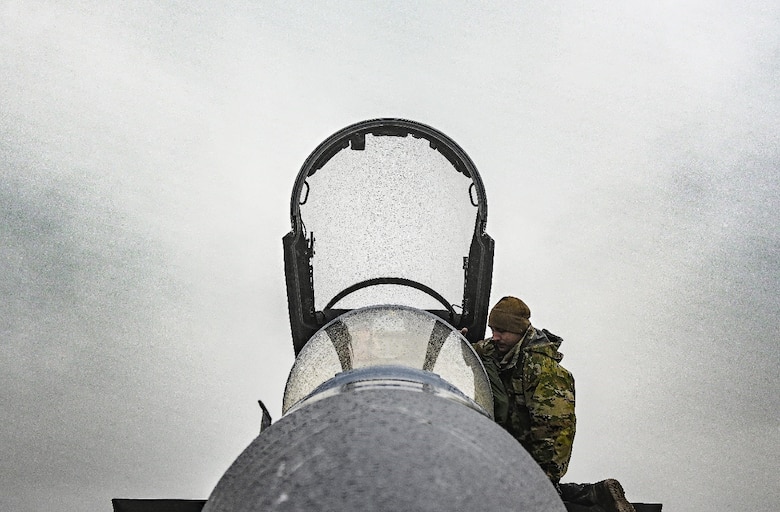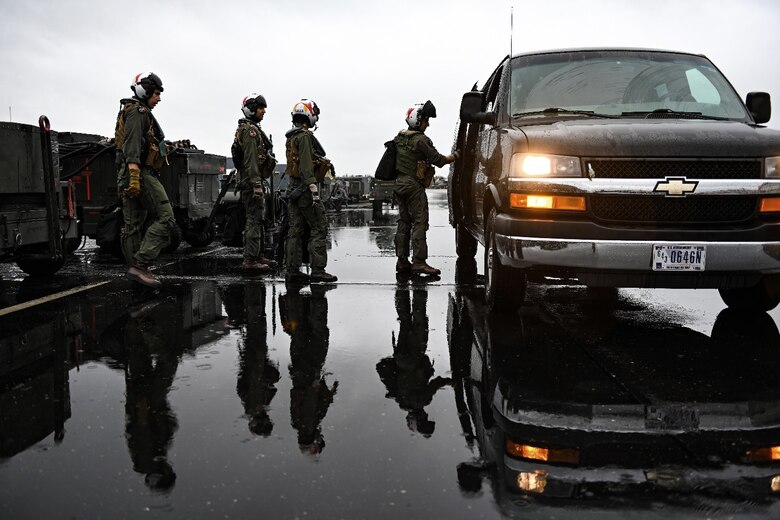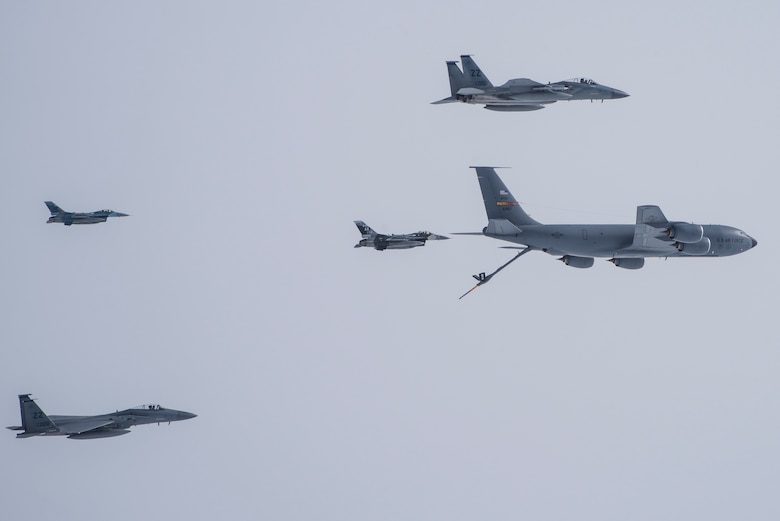Red Flag-Alaska 21-3 concluded at Joint Base Elmendorf-Richardson Aug. 27, strengthening interoperability and showcasing air dominance in the Indo-Pacific region.
RF-A is a Pacific Air Forces-sponsored multinational exercise that provides a simulated combat environment through a series of large force employment training, close air support, and joint offensive counter-air exercises.
This iteration of RF-A involved participation by the Royal Australian Air Force, in addition to the multiple U.S. military units who arrived from Kadena Air Base, Japan, and from military installations across the U.S.
"This exercise was a great opportunity for us to work closely with units from Australia and from all around the United States, showing our resolve to keep the Indo-Pacific region free and open," said U.S. Air Force Maj. Gregory Weigel, 354th Operations Group Detachment 1 assistant director of operations.
This was the first iteration of Red Flag to feature F-35 Lighting IIs from the RAAF, along with fifth-generation aircraft from the U.S.
"Red Flag provides an excellent opportunity for our two countries in continuing to improve our interoperability and integration," said RAAF Squadron Leader John Thornton, 2 Squadron Detachment commander. "Not only does this include the aircraft flying the missions, but also between all the support personnel from both countries like the intelligence and maintenance teams."
"This integration and interoperability is essential in developing an intelligent and skilled workforce that is ready to deliver air power when called upon," Thornton said.
RF-A occurs three to four times each year, with the majority of takeoffs from both JB Elmendorf-Richardson and Eielson Air Force Base.
"We accomplished a variety of training from aerial refueling, dirt landing zones and cargo airdrops to air-to-air combat and air-to-surface combat against a large simulated enemy force," Weigel said.
Alaska's strategic value for the exercise is due to its vast airspace, varied terrain and advanced range complexes, chiefly the Joint Pacific Alaska Range Complex, or JPARC. The JPARC boasts thousands of square miles of land and airspace, providing a realistic training environment that accommodates new technologies' increased mobility, expanded capabilities and improved communications.
Approximately 1,800 U.S. and RAAF service members flew, maintained and supported more than 80 aircraft from more than 20 units during this iteration of the exercise.
"Two Squadron is fortunate to get the opportunity to participate in a wide variety of exercises with the U.S. Air Force," Thornton said. "The relationships that are forged cannot be underestimated, and form part of the foundation that sees the Australia and U.S. alliance become stronger through engagement."
Although RF-A 21-3 included U.S. and Australian forces, armed services from numerous ally and partner countries around the world have participated in past Red Flag exercises.
"I really enjoy the opportunity to work with crews from all over the world and it's great to see them work together to solve difficult problems," Weigel said.
In coordination with military medical personnel and public health personnel, every aspect of Red Flag-Alaska has been analyzed to ensure the appropriate mitigation measures are taken against COVID-19.

An Airman assigned to the 18th Aircraft Maintenance Squadron performs pre-flight checks on an F-35A Lightning II ahead of a flying mission Aug. 16, 2021, at Eielson Air Force Base, Alaska. The flying mission was part of a Red Flag exercise designed to test air combat tactics on fifth-generation aircraft. (U.S. Air Force photo by Staff Sgt. Christian Conrad)

U.S. Air Force F-35A Lightning II pilots enter a van to be transported to the flight line at Eielson Air Force Base, Alaska, Aug. 16, 2021. The Aug. 12-27 iteration of the base's Red Flag exercise placed a focus on fifth-generation aircraft training, including air combat simulations. (U.S. Air Force photo by Staff Sgt. Christian Conrad)

U.S. Air Force F-15C Eagles assigned to the 44th Fighter Squadron, Kadena Air Base, Japan, F-16 Fighting Falcons assigned to the 18th Aggressor Squadron, and a KC-135 Stratotanker assigned to the 912th Air Refueling Squadron, March Air Reserve Base, Calif., fly in close proximity during Red Flag-Alaska 21-3, near Eielson Air Force Base, Alaska, Aug. 23, 2021. The exercise gives aviators an opportunity to hone the skills required in combat by providing training scenarios that replicate near-peer adversary tactics, techniques and procedures in a controlled environment. (U.S. Air Force photo by Senior Airman Aaron Larue Guerrisky)






